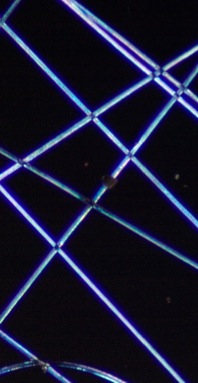Convergence Polymer Science
Polymers, or macromolecules, constitute a fundamental component of modern materials science and technology and they also play very important roles in biological systems. The course, aimed for a convergence science audience, consists of three parts, together giving a broad understanding of the physics and physical chemistry of the many types of polymer that are encountered in convergence science and technology research and applications. In the first part we introduce basic polymer science concepts and explain fundamental phenomena. The second part gives a bird's eye view of the full interdisciplinary field of polymer science, covering synthetic and natural polymers, block-copolymers, ionic polymers (polyelectrolytes), polymer fibers as well as three key biopolymers: cellulose, proteins and nucleic acids. Finally, novel polymer categories with particular potential for future applications will be discussed, such as shape memory polymers and stimuli-responsive/adaptive polymers.
Main course books:
- Giant Molecules (World Scientific)
Alexander Y. Grosberg and Alexei R. Khokhlov
- Polymer Physics (Springer)
Ulf Gedde - Polymer Physics (Oxford University Press)
Michael Rubinstein and Ralph H. Colby
- Introduction to Physical Polymer Science (Wiley)
Leslie H. Sperling - Adaptive and Functional Polymers, Textiles and Their Applications (Imperial College Press)
Jinlian Hu
The class starts on Tuesday September 3rd 2013 at 5:00 pm in room D-111 (Gwanggyo campus).
PDFs of the slides shown during the lectures will be available for download from the course resources page once the course has started.
Schedule (week by week):
- Introduction to and overview of the course. Basic concepts of polymer science. Polymer classification. The key polymerization and crosslinking methods.
- Polymer structure: stereo-, sequence and structural isomerism. Polymer architecture/topology. Polymer size dispersity and molecular mass averages.
- No class due to travel + 추석
- Phase transitions in polymers and the glass transition. Glassy, semi-crystalline, liquid crystalline and rubbery polymers (elastomers).
- Polymer conformation in melts and solutions. Persistence length and Kuhn segment. Radius of gyration. Edwards’ tube model for rubbers.
- Entangled polymer dynamics: the Rouse and the reptation models. Polymer melts and solutions as non-Newtonian, viscoelastic fluids. Polymer mechanical properties. Rheological measurements.
- Topic proposal presentations + voting. Project work session 1.
- Adhesives and epoxies/thermosets. Polymer composites. Synthetic polymer fibers and textiles; fiber spinning techniques.
- Mid-term exam. Mixtures/blends and Flory-Huggins theory.
- Project work session 2.
- Block co-polymers. Ionomers/polyelectrolytes. Conducting polymers.
- Biological polymers 1: proteins. Biological polymers 2: polysaccharides and cellulose.
- Project work session 3. Biological polymers 3: nucleic acids and their uses in biology and in nanotechnology.
- Responsive and adaptive polymers. Actuators and shape-memory polymers.
- Project presentations. Course review, example problem solving, additional topics of interest
- Final exam; Two consecutive lecture hours written exam or individual 60 minute slots oral exam
Welcome !
Back to teaching overview

